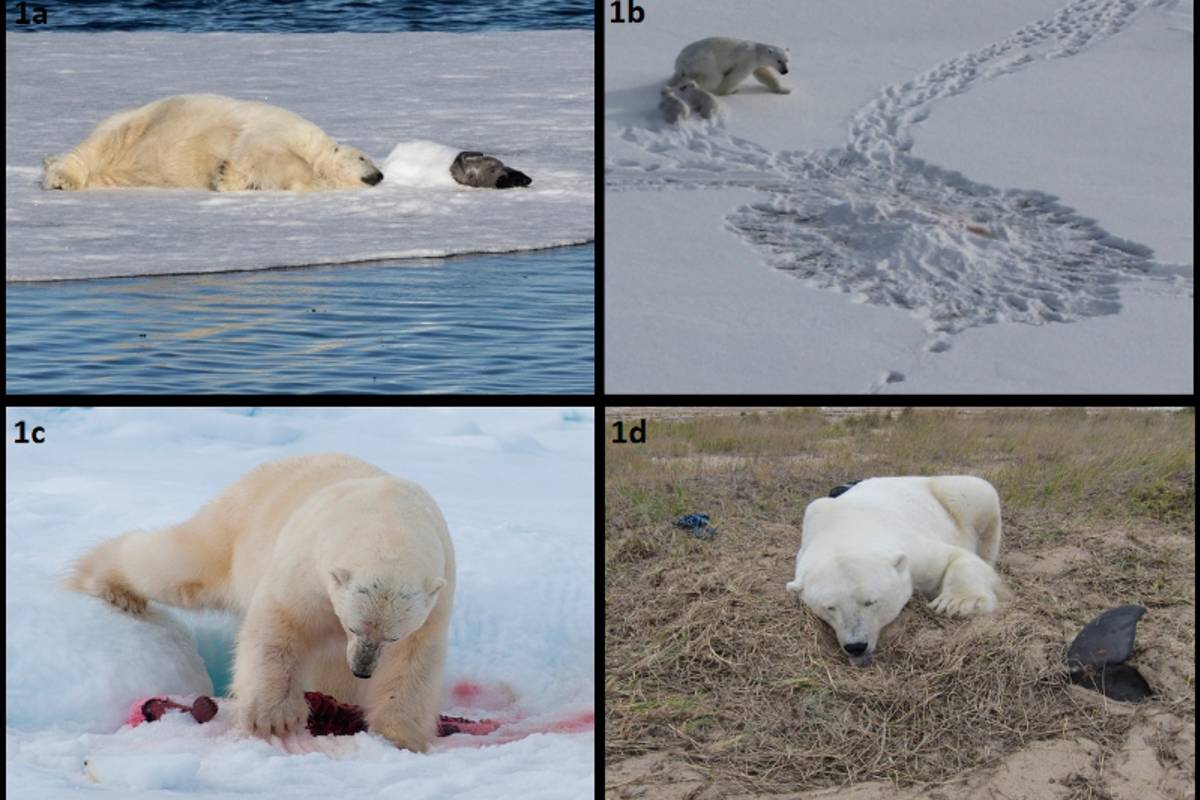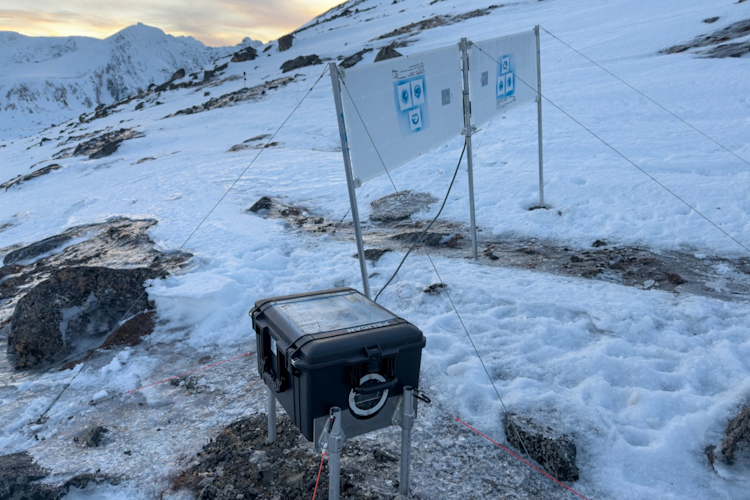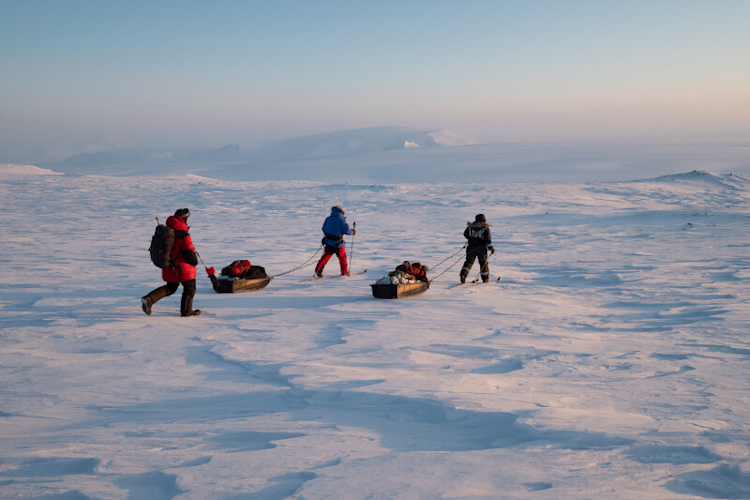Just when you thought you knew everything about polar bears, new information comes to light. In this case, a recent scientific paper explores caching behavior in some bears—including kills hidden under the snow and guarded, providing a secret stash to feast on over a period of one to several days.
The study, led by Dr. Ian Stirling, is the first comprehensive look at this behavior, pulling together data on caching from an impressive number of polar bears and places around the Arctic.
“My curiosity about short-term food caching was reactivated by receiving a photo from a friend of a male polar bear lying on the ice with a mostly snow-covered harp seal [1a above],” Stirling said. “I had seen this kind of behavior only once in over 40 years of research on polar bears. On talking with colleagues—Kristin Laidre, Andy Derocher, and Rinie van Meurs—all had seen this behavior, but only rarely.
“Since polar bears evolved from brown (grizzly) bears only about half a million years ago, but caching is a frequent occurrence in the latter, we wondered why they were so different. That led to a wider search for observations and some speculation about why the different pattern of behavior might have evolved in polar bears.”
Unusual but not unheard of
The study, published in NRC Research Press, documents food-storing behavior in just 19 individual polar bears out of thousands observed over a 45-year period. Despite the rarity of the behavior, the case stories add fascinating insights into the polar bear’s ecology, behavior, and evolution.
A polar bear’s feeding schedule is unpredictable, to say the least. Even though bears on the sea ice constantly watch for seals and other prey, they don’t know when the next potential meal will appear on the horizon and whether the hunt for it will be successful.
The uncertainty still exists even after a successful hunt. Will other polar bears in the area move in and try to steal the fresh kill from under their paws? A polar bear can eat 10 to 20 percent of its own body mass in one go, a trait that is exceedingly practical, allowing a bear to eat as much of a seal’s fat layer as possible before a potential competitor shows up. Even so, adult seals are too big for most polar bears to eat in one go. This means the bear will have to decide: Will it leave the leftovers behind and go on an uncertain search of another seal, choosing instead to maximize the chances of finding new prey? Or will it stay, sleep off the meal, and hope to eat a bit more of the kill later – meanwhile, running the risk that another bear will move in and eat it first?
Some bears choose the latter and may even—as described in the new paper—bury their leftovers (or a carcass if they happen to come across one) under a blanket of snow in an attempt to dissuade other bears from coming into the area to investigate. Although the snow cover is unlikely to cover up the smell, it will at least presumably make the sight of the kill less conspicuous on the otherwise white surface of the sea ice.
Determining factors
The authors found that some factors were likely important in determining whether an individual polar bear cached its prey or not: size of the killed prey, how much was left of the kill after the bear had first had its fill, and how deep the snow was on the ice around the kill. The authors also speculated that skinnier bears might be more likely to cache their food.
Caching kills or scavenged carcasses is a well-known phenomenon in brown bears, the closest relative to the polar bear. Over time, however, the differences in ecology between the two species would likely have shaped the frequency with which they cache—for example, brown bears occur in much higher densities than polar bears do, so they have a higher incentive to want to hide their kill. Further, brown bears compete with a lot of very efficient scavengers (ravens, for example, have been found able to remove 2-37 kilograms of food per day from a carcass!) while polar bears only have the occasional Arctic fox and a low number of birds to worry about.
“Basically, the fat and meat from smaller seals, such as pup or yearling ringed seals are largely devoured immediately, leaving little to hoard,” Stirling said. “In contrast, the carcasses of adult ringed seals, harp seals, and bearded seals may be covered with snow, to reduce the chance of kleptoparasitism [theft] by another bear or other scavengers visually detecting a dark spot on the ice, while the hoarding bear lies nearby.”
Although less than 0.5% of the polar bears included in the paper exhibited caching behavior, the story it paints is wonderful, adding another little piece of the puzzle to our knowledge of everyday polar bear life far out on the Arctic sea ice. If you’re curious for more details of the study, it can be accessed here.
Dr. Thea Bechshoft is a staff scientist with Polar Bears International, based in Aarhus, Denmark.
Feature Image Caption: Caching behavior is unusual but not unheard of in polar bears. (a) Adult male lying beside partially buried harp seal in northeast Svalbard, © J. Varley (b) adult female polar bear and two cubs-of-the-year with adult ringed seal completely buried in northeast Greenland, © K.L. Laidre (c) adult male standing over subadult bearded seal carcass while covering it with snow in the Barents Sea in northern Svalbard, © R. Van Meurs (d) immobilized adult male lying beside beluga whale calf covered with grass except for the fluke on the Manitoba coast of Hudson Bay, © N.J. Lunn. Images courtesy of NRC Research Press.
















